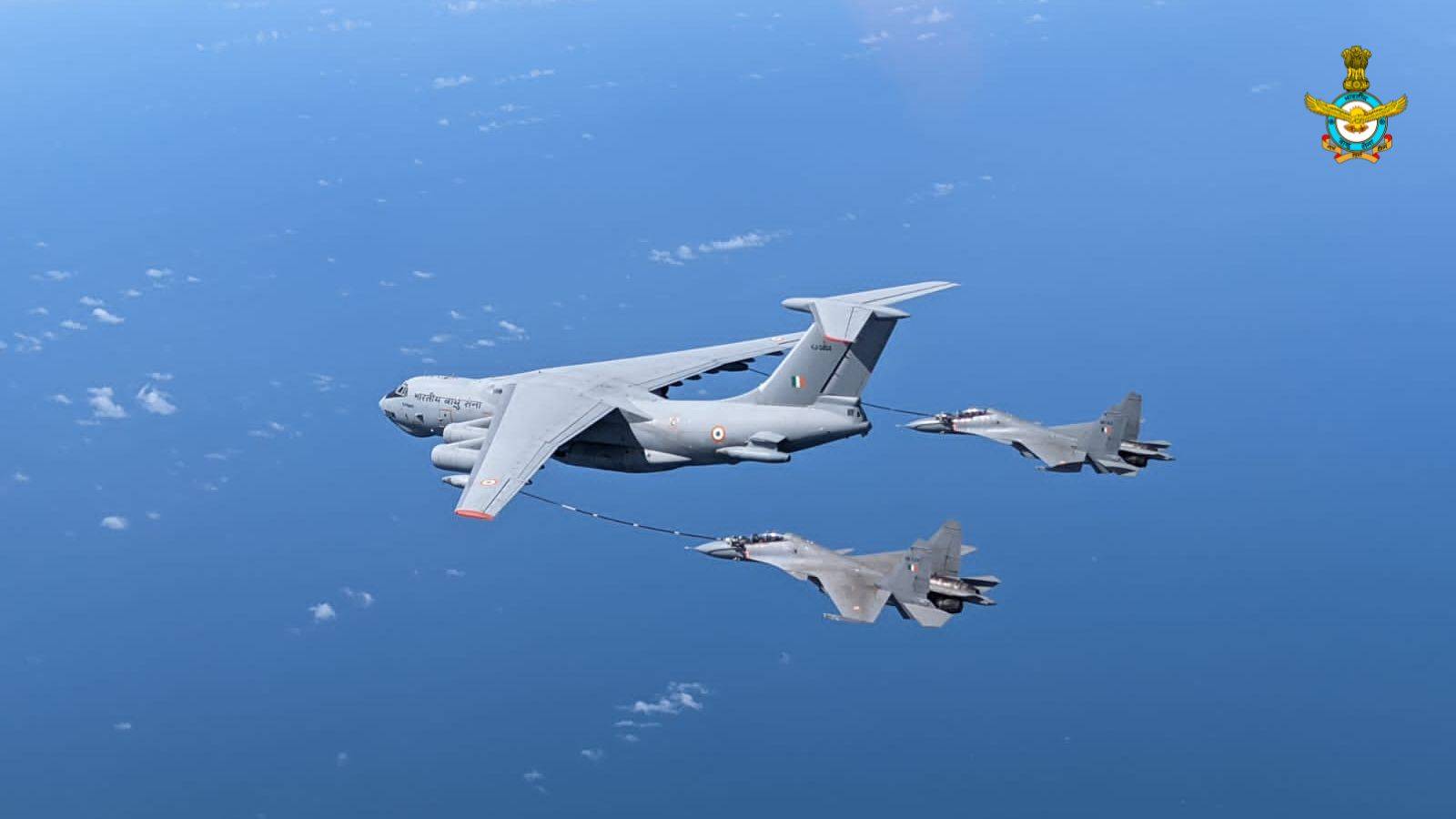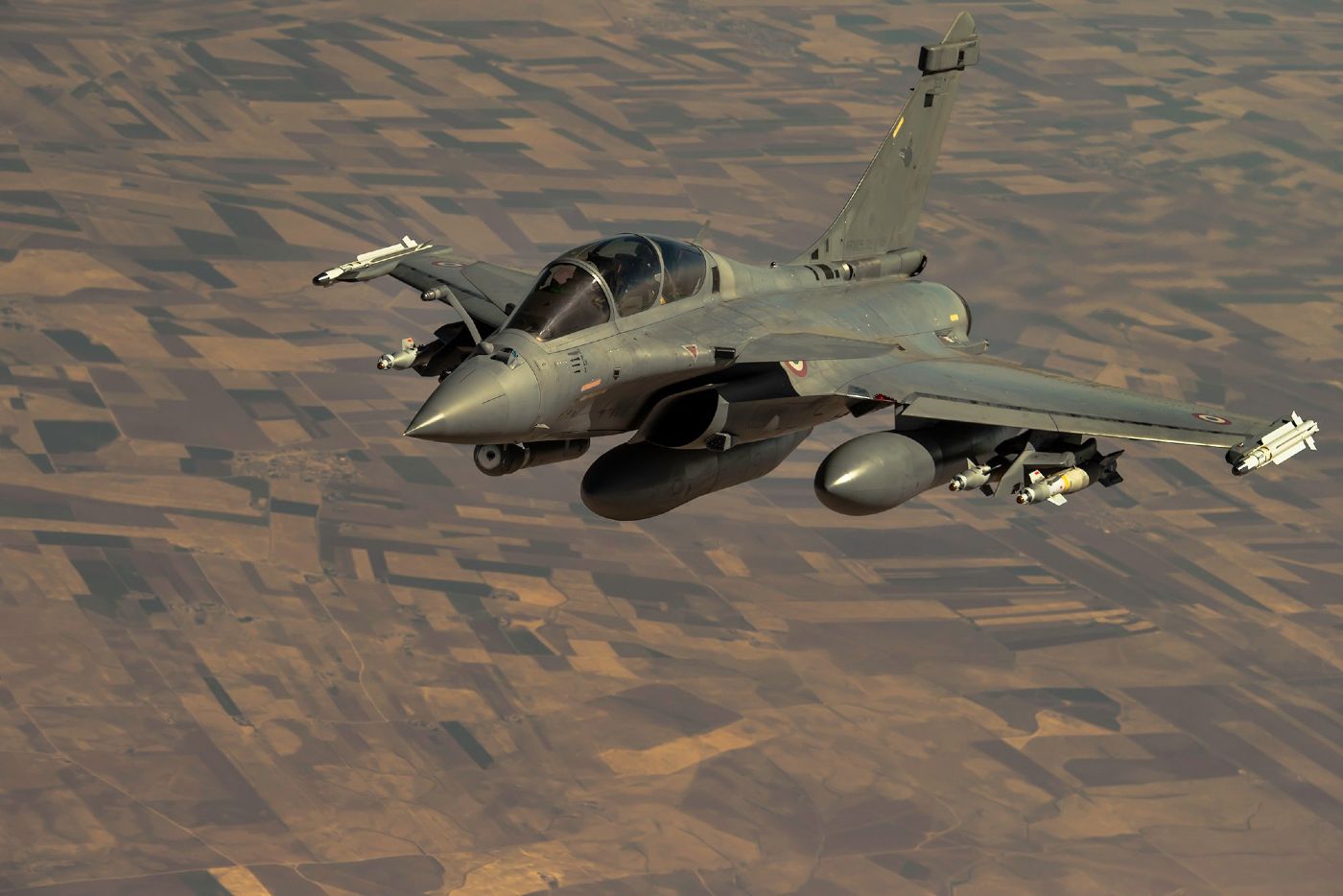India is sending its Rafale combat jets to France for a multi-nation air exercise. This is the first time the 2020-inducted Indian Air Force (IAF) fighters have flown overseas to join a war game in a friendly foreign nation’s air base.
The French-origin nuke-delivery platform has emerged as the South Asian giant’s true “frontline” fighter replacing the Russian-origin Su-30MKIs.
All previous bilateral and multilateral wargames over the last 15 years have only witnessed Sukhoi combat aircraft’s participation from India’s side. The decision to send the Rafales to France for the wargames signals a shift in India’s combat jets line-up against archrivals China and Pakistan.
Four of the omni-role Rafale have flown to French Air and Space Force (FASF) Mont-de-Marsan air base from India as part of the IAF’s contingent today to join ‘Exercise Orion 2023’ alongside air force contingents from the United States, United Kingdom, and a host of other NATO nations, namely Germany, Greece, Italy, the Netherland, and Spain.
“This would be the first overseas exercise for the IAF’s Rafale aircraft,” IAF’s spokesperson Wing Commander Ashish Moghe said in a statement. “Participation in this exercise would further enrich the employment philosophy of the Indian Air Force by imbibing the best practices from other air forces,” Moghe said.
Orion 2023 Aerial Wargames
NATO’s Exercise Orion 2023 will begin on April 17 and go on for about three weeks till May 5. The IAF’s Rafales are accompanied by a contingent of 165 airmen and officers, along with two Boeing C-17 Globemaster heavy cargo aircraft and two Russian Ilyushin IL-78 midair refuelers.

Exercise Orion 2023 is France’s biggest, in which its friendly foreign nations participate, India included, apart from NATO allies. During the second phase of the exercise, about 12,000 personnel of the NATO countries are participating. It would focus on defensive operations on land, in the air, at sea, and in cyberspace, reads a NATO statement.
According to Ministre De Armees, the French armed forces ministry, Orion 2023 is based on a scenario developed by NATO to apprehend the different phases of a modern conflict and will be on a scale unprecedented in recent decades.
It aims to train the French armed forces within a multinational joint forces framework to refocus the armed forces and their various branches and administrative levels on a joint, multi-domain (MDO) exercise in a contested environment.
#ORION23 | Objectif: sécuriser un point d’entrée sur le théâtre d’opérations.
Des A400M @Armee_de_lair ont largué plusieurs centaines de parachutistes @11eBP : une opération aéroportée pour débuter cet exercice interarmées d’envergure inédite. pic.twitter.com/rht3vc2i7C
— Armée française – Opérations militaires (@EtatMajorFR) February 25, 2023
The exercise will also involve an inter-ministerial perspective extending beyond purely military concerns. So, one of the major training themes of Orion 2023 will be the coordination of assets and effects over the full spectrum of operations to tackle these hybrid strategies.
This exercise will directly help to demonstrate France’s role as a major force for balance, able to commit to the defense of its own interests and to live up to its ambitions by engaging its effective participation in any actions that the Alliance may take in response to a crisis.
In this respect, the exercise will enable France to position itself as one of the few European nations able to summon this level of expertise in the operational planning and conduct of large-scale military exercises, said Ministre De Armees.
Rafale’s Tryst With Indian Air Force
India had ordered 36 of the 4.5-generation fighters from France in 2016 for nearly US$8 billion after Prime Minister Narendra Modi had, in 2015, canceled a tender for 126 combat planes in which French company Dassault Aviation’s Rafale had emerged as the winner in January 2012.
The likely contract award had stalled for over three years before Modi intervened to scrap the potential deal and shrunk the order from 126 to 36 in an emergency buy due to operational requirements of the Indian Air Force.

India received the first set of Rafales at its home air base in Ambala in India’s northern state of Haryana in October 2019. The jets got inducted into a squadron of the IAF in September 2020.
In 2022, France’s Dassault Aviation completed the delivery of all 36 Rafale combat jets, which have been arranged into two squadrons of the IAF, the other being at Hashimara in West Bengal. The squadron, comprising 18 Rafales, in Ambala, would defend Indian skies in Kashmir and Ladakh, while the one in Hashimara would defend Sikkim and Arunachal Pradesh.
During the ongoing military conflict against China in eastern Ladakh since April 2020, India deployed its Rafale jets to carry out patrol missions along the Line of Actual Control (LAC), testing the aircraft’s capabilities for the first time in an operational situation for the IAF.
Wing Commander Moghe also told EurAsian Times that Rafale is now India’s frontline fighter, a role played by Su-30MKI air superiority fighters until recently. The last time Russian-origin Su-30MKI participated in an overseas air exercise was in January 2023 at the ‘Veer Guardian 2023‘ with the Japan Air Self-Defense Force. The air exercise previous to Veer Guardian was in August 2022 at ‘Exercise Pitch Black 2022‘ at Darwin with the Royal Australian Air Force.
WUOF.jpeg)
Even during the February 2019 air strikes carried out by India on Balakot in Pakistan-occupied Kashmir in retaliation to the terror strike in Pulwama in Jammu and Kashmir, India had used the Su-30MKI only in a support role as a diversion to draw out the Pakistan Air Force’s Lockheed Martin F-16s while the main attack was carried out by Rafale’s Dassault Aviation-made sister combat jet, the nuke-capable Mirage-2000.
Among the seven types of combat aircraft in the IAF’s inventory, only Mirage-2000, Su-30MKI, and Rafale are capable of delivering a nuclear weapon and are a key element of the nuclear triad that India enjoys to give credibility to its second-strike capability under its 2003 nuclear doctrine.
IAF currently operates 270 Su-30MKI, an Indian variant of the Russian Sukhoi’s Su-30 combat jets in 12 combat squadrons now. India had signed a deal for the licensed production of 272 Su-30s aircraft at the state-run Hindustan Aeronautics Limited’s (HAL’s) Nasik facility in 1997. HAL completed production of the entire lot of 272 Su-30MKIs recently.
- Penned By Neeraj Rajput, Edited By NC Bipindra
- Mail us at: etdesk (at) eurasiantime.com




